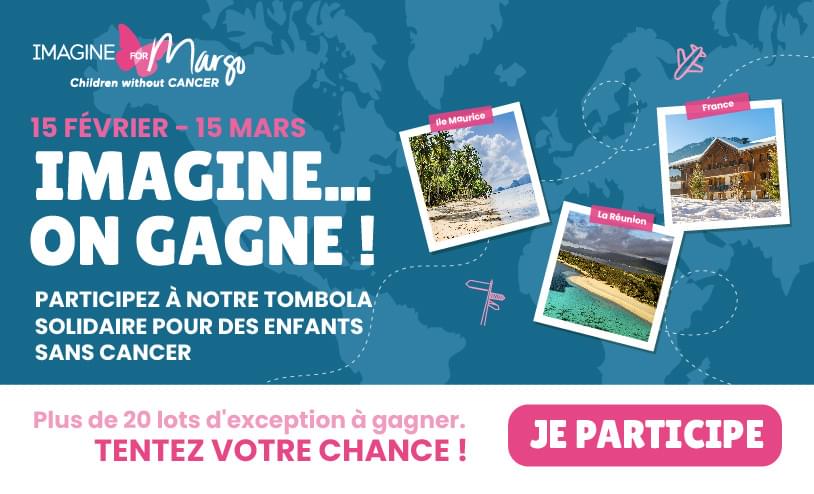Like any cancer, pediatric cancers correspond to the disruption of a cell which, by multiplying, will disrupt the normal functioning of the body. Today, there are 100 different types of cancer in children and teenagers that affect 2,500 little warriors in France every year.

CANCER: A SINGULAR NAME FOR A MULTIPLE DISEASE
We often talk about childhood cancer as if it were one and the same disease. However, as with adults, there are many different pathologies. Indeed, in 2023, there will be nearly 100 different types of childhood cancers, which makes them rare diseases for manufacturers.
Each of these forms of childhood cancer requires specific treatment, which unfortunately is not yet possible today for all childhood cancers. The chances of controlling the disease or completely curing it are different for each type of cancer.
WHAT CANCER FOR WHAT AGE?
The frequency of childhood cancers varies according to age:
- Nephroblastomas, neuroblastomas and rhabdomyosarcomas are more common in early childhood
- Bone tumors and lymphomas usually appear later
- The most frequent cancers are leukaemias, which represent 30% of all malignancies, followed by tumors of the central nervous system (20%).
WHAT IS CANCER?
Cancer is a degeneration of cells. Indeed, our body is composed of billions of cells enclosing, for each of them, our genes. These contain the information necessary for the proper functioning of our body or, in the case of cancer, erroneous information.
Each cell is born, multiplies and dies. During cell division, it transmits to its child cell the genetic material it held. Sometimes, it can happen that some undergo mutations and transmit erroneous information. This will either be destroyed by our body, or multiply and spread the anomaly in our body.
This is what cancer is: a cell spreading bad information that induces abnormal functioning within our body.
WHY DO CHILDREN DEVELOP CANCER?
The real causes of childhood cancer are still very poorly understood. Indeed, unlike adults, children are often “virgins” of the consumption of factors favoring the development of cancer in adults (alcohol, tobacco, poor lifestyle, etc.). The role of environmental factors in the occurrence of childhood cancer is being studied. Current data are still fragmentary and their interpretation is often difficult.
To date, there is no solid and well-argued scientific data to incriminate one or more environmental factors in the occurrence of cancer in children. Research work is in progress and will improve knowledge on the possible role of these environmental factors. The role of genetic factors is also low (about 5% of cases) according to the website of the National Cancer Institute.
The starting point for the proliferation of cancer cells can be the bone marrow, then it is leukemia. If it is in an organ or tissue, then it is called a cancerous tumor or a malignant tumor (or also called a solid tumor).
Numerous research projects are being carried out in order to advance knowledge, prevention and the development of appropriate treatments. Within Imagine for Margo, we have been mobilizing since our creation in 2011 to better understand in order to better cure pediatric cancers. Indeed, without research funding, it is impossible today to imagine a world with children without cancer. This is why we have made it our core mission and our absolute priority.
WHEN AND HOW DOES CHILDHOOD CANCER START?
The signs of childhood cancers are variable and often misleading. Indeed, they can be observed during so-called benign and frequent diseases in children. In the event that one of the symptoms occurs such as a headache, sore throat, intense fatigue… it is important not to worry directly. If the signs disappear quickly, it will therefore be a flu for example. However, if these persist and/or accumulate, it is important to consult your doctor or pediatrician in order to carry out additional biological or radiological examinations.
Symptoms may be paleness, fatigue, fever, loss of appetite, bone or joint pain, bruising, abdominal pain, headache, visual impairment, gait disturbance, falls, torticollis, repeated vomiting… In case of doubt, it is important to refer to a health professional.
The time between the first symptoms and the diagnosis of cancer varies depending on the type of cancer and the organ or tissue of origin. Upon diagnosis, it is important to follow the advice of health specialists to determine the best treatment.
EVOLUTION OF CHILDHOOD CANCERS
When your child has been diagnosed with cancer, it is important to quickly assess, with a health professional, the options available to him. Chemotherapy, radiotherapy, surgery, therapeutic treatments or a combination of several of them… the possibilities are diverse and must correspond to the type of cancer your child has.
For many years, we have been working to develop precision medicine for children. This allows, thanks to the generalization of molecular sequencing initiated by the MAPPYACTS program, which we co-financed and which has since been taken over by the State within the framework of France genomic medicine 2025 to specifically target, when possible, tumor abnormalities. As part of a treatment, your child can then, today, be offered the best possible therapeutic solution to fight his cancer.
Without treatment, cancers progress almost all the time in similar stages, at widely varying speeds and patterns. This is what doctors call the “natural history” of cancer. This evolution, without any treatment, consists of the appearance of precancerous lesions which contain cells in the process of mutation, these cells will then multiply in the original tissue and then grow and spread to neighboring tissues.
To find out more, we advise you to consult the “What is cancer?” from the National Cancer Institute.
If you want to help us fight against pediatric cancers, the leading cause of death by disease in children over one year of age in France in Europe, you can either make a donation directly on our site or consult the “help us” page.
It is by continuing to mobilize all together that we will be able to defeat childhood and teenager cancer.


